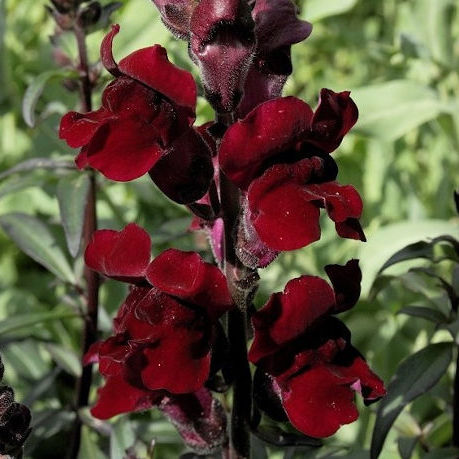Snapdragon seeds

Common name
African daisies, daisybushes
Botanical name
Antirrhinum
Details
Antirrhinum is a genus of plants commonly known as dragon flowers, snapdragons and dog flower because of the flowers' fancied resemblance to the face of a dragon that opens and closes its mouth when laterally squeezed. They are native to rocky areas of Europe, the United States, Canada, and North Africa.
Price
$3.90
50 seeds
Antirrhinum, commonly known as snapdragon, is a genus of flowering plants that belongs to the family Plantaginaceae. These plants are known for their vibrant, snap-like flowers that resemble the face of a dragon when gently squeezed. Here are some key points about Antirrhinum plants and their benefits: 1. Ornamental Beauty: Antirrhinum plants are primarily grown for their striking flowers, which come in a wide array of colours, including pink, red, yellow, orange, and white. The flowers often have a two-lipped shape with a prominent "snout," hence the name "snapdragon." They add beauty and visual interest to gardens, borders, and containers. 2. Long Blooming Period: Snapdragons are valued for their extended blooming period, typically lasting from late spring to fall. This makes them a popular choice for adding colour and charm to outdoor spaces for an extended period. 3. Attracts Pollinators: The snapdragon's flowers produce nectar, which attracts pollinators like bees, butterflies, and hummingbirds. Planting snapdragons can help support local pollinator populations and contribute to the overall health and biodiversity of your garden or landscape. 4. Cut Flowers: Snapdragons make excellent cut flowers due to their vibrant colors, unique shape, and long-lasting nature. They can be used in floral arrangements or enjoyed in bouquets, bringing a touch of elegance and charm to indoor spaces. 5. Versatility in Gardens: Antirrhinum plants are versatile and can thrive in various garden settings. They can be grown in flower beds, borders, rock gardens, and even as container plants. Their height varies depending on the cultivar, ranging from dwarf varieties suitable for edging to taller types that work well as backdrops. 6. Easy to Grow: Snapdragons are relatively easy to grow, making them suitable for both beginner and experienced gardeners. They prefer full sun to partial shade and well-draining soil. Snapdragons are generally tolerant of different soil types and can withstand moderate drought conditions. 7. Self-Seeding: Some snapdragon varieties have a tendency to self-seed. This means that after the flowers fade and the seeds mature, they may drop to the ground and germinate on their own, producing new plants in subsequent growing seasons. This self-seeding characteristic can result in a naturalized and continuous display of snapdragons in your garden. 8. Educational Value: Snapdragons can be a great educational tool for children and adults alike. They can be used to teach about plant anatomy, pollination, and the importance of biodiversity in the ecosystem. 9. Medicinal Use: While primarily grown for ornamental purposes, snapdragons have historically been used in herbal medicine. Some species within the Antirrhinum genus contain compounds with potential anti-inflammatory and antimicrobial properties. However, it's important to note that the medicinal use of snapdragons is not widespread, and consulting a healthcare professional is recommended for any specific medical purposes. Overall, Antirrhinum plants, or snapdragons, offer vibrant and long-lasting flowers, attract pollinators, and are relatively easy to grow. They can enhance the beauty of gardens, serve as cut flowers, and provide educational value.
